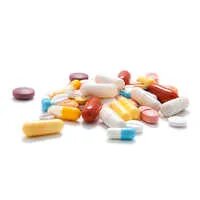The Impact of Life-Saving Drugs on Better Health

Life-saving drugs play a crucial role in maintaining and improving health. They are designed to treat serious conditions and diseases, often turning life-threatening situations into manageable ones. In this guide, we will explore the importance of these drugs, how they work, and why they are essential for better health.
What Are Life-Saving Drugs?
Life-saving drugs are medications that can significantly reduce the risk of death or severe complications from various diseases. The manufacturer of rifaximin, a crucial antibiotic for treating gastrointestinal infections, ensures the production of high-quality, effective medication. They are often used to treat conditions such as cancer, heart disease, diabetes, and infections. These drugs are developed through rigorous research and testing to ensure their safety and effectiveness.
Why Life-Saving Drugs Are Important
- Preventing Death: The primary goal of life-saving drugs is to prevent death. For many diseases, such as cancer or heart disease, these drugs can halt the progression of the disease, improve survival rates, and enhance the quality of life.
- Managing Chronic Conditions: Life-saving drugs help manage chronic conditions that require long-term treatment. For instance, insulin is vital for people with diabetes to control their blood sugar levels and avoid serious complications.
- Improving Quality of Life: These drugs can significantly improve the quality of life for patients. They can reduce symptoms, improve daily functioning, and allow individuals to lead more active and fulfilling lives.
- Reducing Healthcare Costs: By effectively treating serious conditions, life-saving drugs can reduce the overall cost of healthcare. Preventing severe complications and hospitalizations can save significant amounts of money for both individuals and healthcare systems.
How Life-Saving Drugs Are Developed
The development of life-saving drugs is a complex and lengthy process involving several key stages:
- Research and Discovery: Scientists conduct extensive research to identify potential new drugs. This phase includes studying diseases, understanding how they work, and exploring possible treatments.
- Preclinical Testing: Before a drug is tested on humans, it undergoes preclinical testing in the laboratory and on animals. This helps to evaluate its safety and effectiveness.
- Clinical Trials: If preclinical tests are successful, the drug enters clinical trials. These are conducted in several phases, each involving a larger number of participants. Clinical trials assess the drug’s safety, efficacy, and potential side effects.
- Regulatory Approval: After successful clinical trials, the drug must receive approval from regulatory authorities, such as the U.S. Food and Drug Administration (FDA) or the European Medicines Agency (EMA). This ensures that the drug meets safety and effectiveness standards.
- Manufacturing and Distribution: Once approved, the drug is manufactured and distributed. Manufacturers follow strict guidelines to ensure the drug is produced consistently and safely.
Examples of Life-Saving Drugs
- Antibiotics: Antibiotics are used to treat bacterial infections and have saved countless lives. They work by killing or inhibiting the growth of bacteria.
- Cancer Treatments: Drugs like chemotherapy, radiation therapy, and targeted therapies have transformed cancer treatment, improving survival rates and quality of life for many patients.
- Insulin: Insulin is essential for people with diabetes. It helps regulate blood sugar levels, preventing complications such as heart disease, kidney failure, and nerve damage.
- Antiretrovirals: These drugs are used to manage HIV/AIDS, allowing individuals to live longer, health lives by suppressing the virus and preventing its progression.
- Vaccines: Vaccines protect against infectious diseases by stimulating the immune system. They have been instrumental in reducing the prevalence of diseases like measles, polio, and influenza.
The Future of Life-Saving Drugs
The future of life-saving drugs looks promising, with ongoing advancements in medical research and technology. Some trends to watch include:
- Personalized Medicine: Advances in genetics and biotechnology are leading to personalized medicine, where treatments are tailored to an individual’s genetic profile. This approach aims to improve the effectiveness and reduce side effects of drugs.
- Gene Therapy: Gene therapy involves modifying genes to treat or prevent diseases. It has the potential to cure genetic disorders and transform the treatment of various conditions.
- Biologics: Biologics are complex drugs made from living cells. They offer new treatment options for diseases like cancer and autoimmune disorders.
- Artificial Intelligence: AI is being used to accelerate drug discovery and development, improving the efficiency and effectiveness of the process.
Read more: Specialitymedz
Access to Life-Saving Drugs
Access to life-saving drugs is a critical issue worldwide. Factors such as cost, availability, and distribution can impact whether individuals receive the treatments they need. Efforts are being made to address these challenges, including:
- Affordable Pricing: Initiatives to reduce the cost of life-saving drugs aim to make them more accessible to people in need.
- Global Health Programs: Organizations like the World Health Organization (WHO) and various non-profits work to ensure that life-saving drugs are available in low-income and underserved regions.
- Patient Assistance Programs: Many pharmaceutical companies offer programs to help patients access medications at reduced costs or for free.
Conclusion
Life-saving drugs are essential for better health, offering hope and improved outcomes for individuals facing serious health conditions. They prevent death, manage chronic diseases, and enhance quality of life. The development of these drugs involves rigorous research and testing, and the future holds exciting possibilities with advancements in personalized medicine, gene therapy, and AI. Ensuring access to these vital treatments remains a global priority, as efforts continue to make life-saving drugs available to all who need them.



